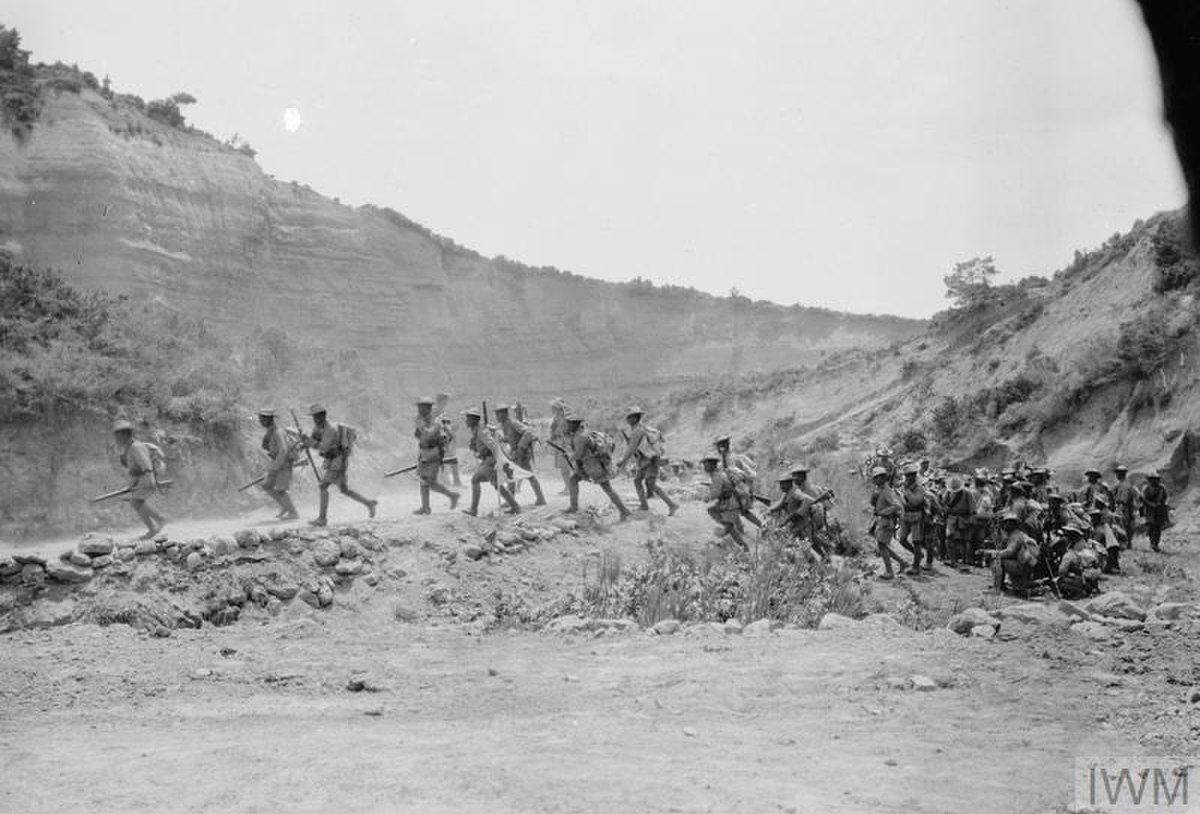
Battle of Gully Ravine
Cwcg Pink Farm Cemetery, SeddüAfter two days of heavy bombardment, battle began at 10.45 am on 28 June with a preliminary raid to capture the Boomerang Redoubt on Gully Spur.[33] The general advance commenced shortly afterwards. The artillery fire on Gully Spur was overwhelming and the 2/10th Gurkha Rifles and the 2nd Battalion of the Royal Fusiliers advanced rapidly a distance of half a mile to a point named "Fusilier Bluff" which was to become the northernmost Allied position at Helles.
On the right of the advance, along Fir Tree Spur, the battle did not go so well for the British. The inexperienced soldiers of the 156th Brigade lacked artillery support and were massacred by Ottoman machine guns and bayonet attacks. Despite the opposition, they were ordered to press the attack and so the support and reserve lines were sent forward but made no progress. By the time the attack was halted the Brigade was at half strength, having suffered casualties of which 800 had been killed.[34] Some battalions were so depleted they had to be merged into composite formations. When the rest of the 52nd Division landed, the commander, Major General Granville Egerton, was enraged at the manner in which his 156th Brigade had been sacrificed.
The Ottomans, with plentiful manpower in reserve but lacking any significant artillery and machine guns, made incessant counter-attacks culminating with the strongest on 5 July but all were repulsed. Still, the control of the strategic hills overlooking Sıgındere and Kerevizdere were denied to the Allies by massive Ottoman bayonet attacks. The Ottoman casualties for the period between 28 June and 5 July are estimated at between 14,000 and 16,000, four times the British losses. Where possible the Ottoman dead were burned but a truce to bury them was refused. The British believed the dead bodies were an effective barrier and that Ottoman soldiers were unwilling to attack across them. This was one of the few truly unvalorous and unmagnanimous acts committed by Allies which infuriated the Ottoman greatly.
On 5 July the last major attack of this battle commenced but met with a very strong wall of fire the Allies put up. The dead were mounting again in front of the British trenches. Mehmet Ali Paşa staff were of the opinion that the Allied advance was already halted and there was no need for these heavy losses. Mehmet Ali Paşa, in fear of a reaction from Liman Paşa, who was in turn intimidated by Enver Paşa hesitated. Again, Major Eggert intervened and Liman Paşa yielded. Finally the slaughter was stopped. This was the bloodiest episode in the entire campaign. After the counter-attacks ceased, the front line stabilised and remained largely static for the rest of the Gallipoli campaign although both sides engaged in a vigorous mining war around the ravine.
